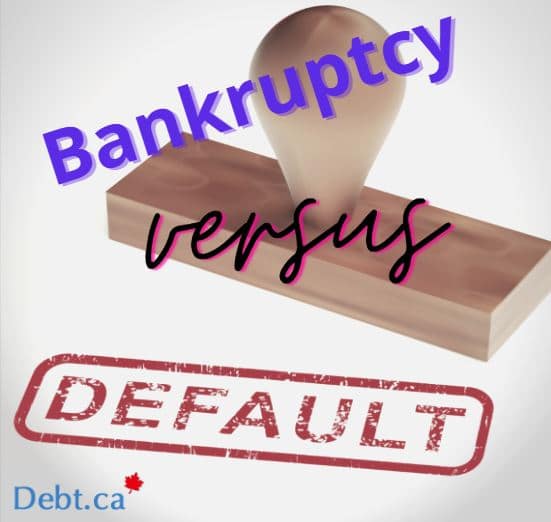Insolvency is a financial state where you’re unable to meet your debts as they come due. When used as a commercial term, it means that your business is unable to pay off its debts. It is typically defined in two separate ways: cash flow insolvency and balance sheet insolvency. Let’s look at both now.
Cash flow insolvency is a state when you’re having difficulty paying your debts as they come due. This can be due to the difficulty in selling your assets. This is often referred to as illiquidity.
Balance sheet insolvency (otherwise known as technical insolvency) is when your liabilities exceed your assets. (This is also known as negative net assets). This means that even when you sell all your assets, including real estate, you’re unable to pay off your outstanding debts.
Insolvency law of Canada
Several laws in Canada cover insolvency. Let’s take a look at the main ones below:
The Bankruptcy and Insolvency Act (“BIA”) [1]
Declaring bankruptcy is a legal process. This regulates laws on filing for <a href=”https://www.debt.ca/blog/preferred-creditors-of-the-bankruptcy-and-insolvency-act”>personal bankruptcy and insolvency in Canada</a>. It covers bankruptcies, consumer proposals, commercial proposals and receiverships. It also oversees the Office of the Superintendent of Bankruptcy, a federal agency tasked with making sure bankruptcies are done in a fair and orderly way.
The Companies’ Creditors Arrangements Act (“CCAA”) [2]
This is a statute that lets insolvent corporations restructure their outstanding debts beyond $5 million with creditors.
The Farm Debt Mediation Act [3]
This act is specifically designed for insolvent farmers and their creditors. It repeals the Farm Debt Review Act.
The Wage Earner Protection Program Act [4]
This act was introduced in 2008 and 2009 to financially compensate employees working for companies that filed for bankruptcy or were placed in receivership under the Bankruptcy and Insolvency Act. In 2011, it was revised to provide further protection to employees who lose their job as a result of a company restructuring, which ends in bankruptcy or receivership.
The Winding-Up and Restructuring Act
Initially passed in 1985, this statute allows for the wind up of specific corporations and the restructuring of financial institutions.
Financial difficulties prior to insolvency
The Constitution Act of 1867 regulates the resolution of financial difficulties that occur before the onset of insolvency.
creation of security interests (with notable caveats)
A security interest is a legal right the debtor grants a creditor over their property. This allows the creditor to use the property as collateral should the debtor fail to meet their debt obligations. An example of a security interest is a mortgage on a home.
absconding debtors
An absconding debtor is someone who departs Ontario with the intention of defrauding a creditor or is in possession of any property not exempt by law from seizure.
bulk sales (in Ontario only)
A bulk sale is when a company sells all or a large portion of its inventory to a third party, that’s not part of the regular course of doing business, in the attempt to avoid paying creditors.
fraudulent conveyances
A fraudulent conveyance is when you try to avoid paying a debt to a third party (a person or company).
- relief of creditors
- seizure of assets
- assignments and preferences
Alternatives to resolving financial difficulties
Consumer Insolvency
Consumer insolvency is when you’re unable to pay your debts as they come true. When you find yourself in this situation, there are several debt options you may explore, including filing for bankruptcy or a consumer proposal.
Commercial insolvency
When it comes to commercial insolvency, there are options and procedures that are distinct from those available in consumer insolvency proceedings. It is governed by the following statutes:
- The Bankruptcy and Insolvency Act (“BIA”)
- The Companies’ Creditors Arrangement Act (“CCAA”)
- The Winding-Up and Restructuring Act
Debt restructuring
A preferable alternative to bankruptcy is debt restructuring. It’s when you make a proposal to your creditors to pay back your debt on different terms. This often involves paying it back a lesser amount, paying it back over a longer period, or both.
If you’re an individual struggling to meet your debt obligations, there are several debt relief options available to you. Creditors realize that when you file for bankruptcy, they may just end up with getting pennies on the dollar. That’s why your creditors may be more willing to accept a debt relief option like debt restructuring. When you restructure your debts, your creditors agree to alter your payments based on an amount and timeline you have a better chance of meeting.
Once your consumer proposal has been accepted, you must make ongoing payments (or in some cases a one-time payment) to settle your debts. If you do this in a smart way with the assistance of an insolvency trustee, you can get rid of your debts and start rebuilding your finances sooner rather than later.
A lot of individuals don’t want to file for bankruptcy or a consumer proposal because it hurts their credit. While that’s a legitimate concern, it shouldn’t be your only concern. The fact of the matter is that your credit can be reestablished once you restructure your debts.
Once you’ve settled your debts by way of a consumer proposal or bankruptcy, you’ll need to take the necessary steps like taking out a secured credit card and paying it off in full to reestablish your credit. By doing that, it can go a long way in getting your credit to where it needs to be to obtain subsequent credit at more favourable terms.
Having trouble restructuring debt? Learn how to get it under control.










